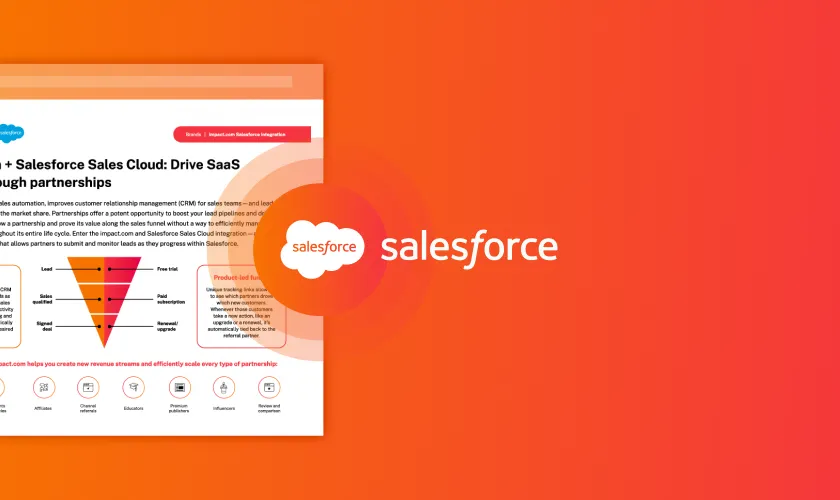United States affiliate marketing spend reached $9.56 billion in 2023, reflecting steady industry growth as more brands leverage partnerships to expand reach and drive measurable results. However, as affiliate programs scale, one challenge consistently threatens their success: communication breakdowns.
Poor communication creates a significant business impact. When communication falls short, brands face:
- Disengaged affiliate partners
- Delayed or misaligned campaign launches
- Missed opportunities for optimization
- Higher partner turnover rates
However, leading brands solve these challenges through strategic communication frameworks and modern tools. By implementing structured communication programs, companies can improve affiliate retention, speed up campaign deployment, and strengthen partner relationships.
This guide shows you how to transform your affiliate communication strategy with proven solutions from successful programs.
Overcoming the 4 biggest affiliate communication challenges
Building strong brand-affiliate relationships isn’t always easy. These challenges can disrupt even the best partnerships, from communication gaps to misaligned expectations. Here are four communication challenges and actionable solutions to keep your affiliate program running smoothly.
1. Streamline your communication tools and platforms
With Slack, emails, and project management tools all in the mix, communication with affiliates can easily get scattered. When tools don’t sync up, brands and affiliates can miss important updates, leading to delays, misunderstandings, and lost opportunities.
Why it happens: Many brands still use outdated systems or a mishmash of tools that don’t connect. This mix can make it tough to keep track of updates and cause essential details to slip through the cracks.
Why fixing it matters: Streamlined communication keeps everyone on the same page. With the right tools, brands and affiliates can focus on collaboration and boost productivity. You want your communication to help everyone feel valued and aligned.
Strategies to improve partner messaging and interactions
Adopt a unified communication platform: Use tools such as Slack to centralize all affiliate communications. A single platform minimizes scattered conversations and ensures everyone stays aligned in real time.
Integrate CRM systems for tracking: Implement a customer relationship management (CRM) tool that allows both brands and affiliates to track campaign progress, communications, and performance metrics in one place. This reduces redundancy and enhances transparency.
Utilize project management tools for collaboration: Platforms such as Trello, Asana, or Monday.com can organize tasks, deadlines, and feedback. This creates a streamlined process where affiliates and brands can collaborate seamlessly on specific campaigns.
Centralizing communication through management platforms: Modern partnership management platforms serve as communication hubs, eliminating the chaos of scattered tools. These platforms typically reduce communication overhead by 40-50 percent through centralized messaging, automated workflows, and key integrations. For instance, impact.com users can:
- Manage all affiliate conversations in one unified inbox
- Set up automated alerts for campaign changes and performance milestones
- Sync affiliate data directly with their existing CRM systems like Salesforce
- Create custom communication workflows based on affiliate engagement levels
- Track message open rates and response times to optimize communication
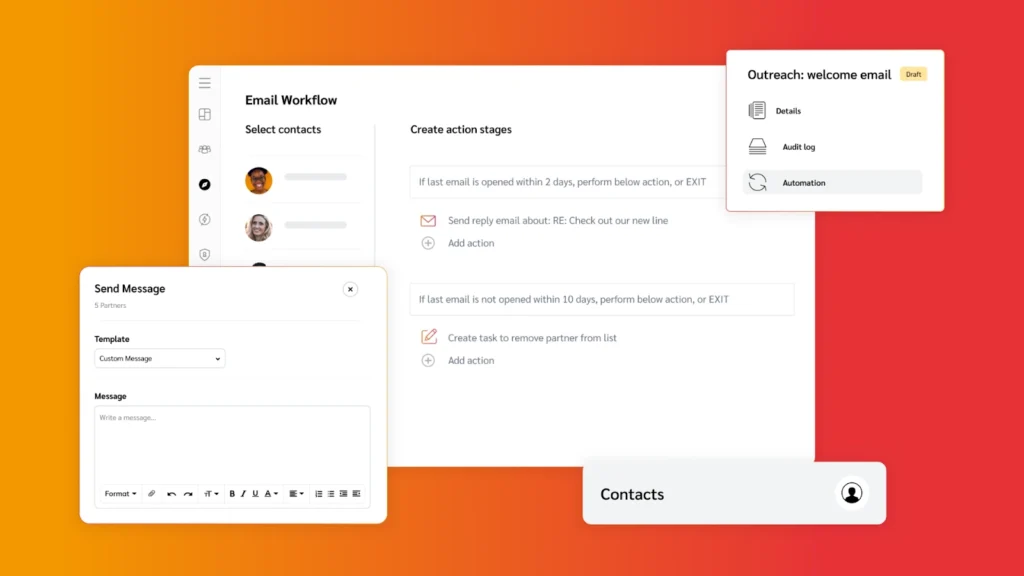
Platforms such as impact.com host communication tools, including messaging, emails, and newsletters.
2. Align partner expectations for better results
Without clear expectations, affiliates might have different ideas about their roles than you. For example, affiliates might think their role is limited to posting occasional links or banners. But in reality, you expected more involved content like product reviews, tutorials, or social media posts.
These differences in expectations can lead to misunderstandings, frustration, and even reduced campaign success.
Why it happens: Misalignment often arises from unclear goal-setting at the outset and ineffective onboarding processes that fail to establish a solid foundation. Without ongoing support or regular feedback, affiliates may struggle to align their efforts with the brand’s objectives, causing confusion and inefficiencies.
Why fixing it matters: Setting clear expectations builds trust and keeps everyone working toward the same goals. This increases program effectiveness, stronger partnerships, and improved overall performance.
Strategies to enhance cohesion in partnerships
Define clear goals during onboarding: Establish specific, measurable goals for affiliates from the outset, ensuring alignment with the brand’s objectives. A comprehensive onboarding process helps set the foundation for long-term collaboration.
Share performance dashboards to drive data-informed decisions: Performance visibility transforms how affiliates optimize their campaigns. Leading brands find that affiliates with access to real-time analytics typically increase conversions by notable percentages. Through customizable dashboards, affiliates can:
- Track conversion rates across different content types
- Monitor earnings in real-time
- Compare performance across campaigns
- Identify peak engagement periods
- Spot trending products or offers
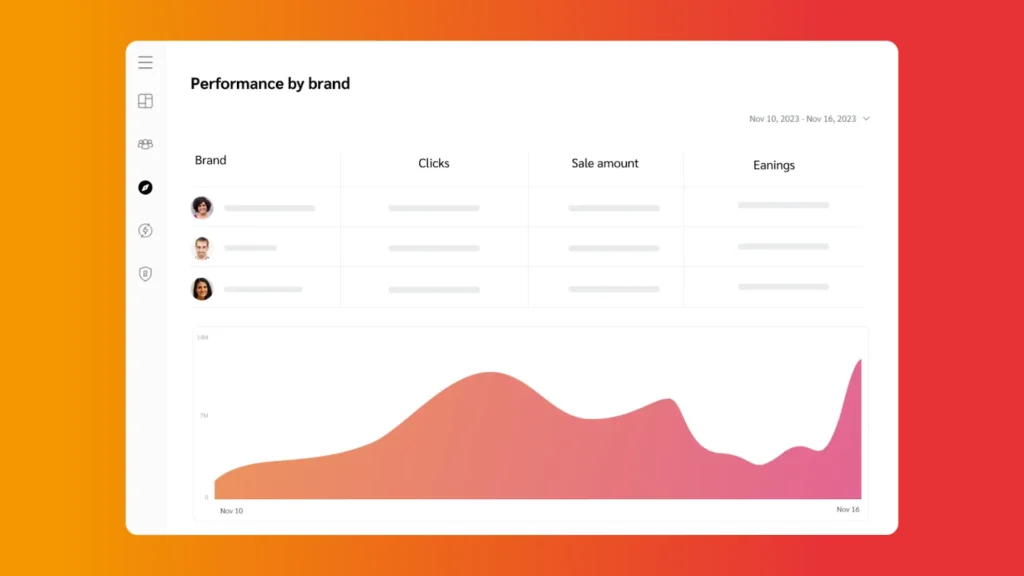
Help partners understand the value they drive and optimize the traffic they refer with a performance reporting suite.
Regularly revisit and update goals: Conduct periodic reviews of performance metrics and program objectives with affiliates. This ensures that strategies remain relevant and aligned with evolving business priorities.
Offer ongoing training and resources: Training sessions, resource guides, and best practice sharing equip affiliates with the knowledge and tools they need to succeed. Affiliates will feel supported throughout the partnership.
3. Maintain consistent communication rhythms
Dips in communication frequency can leave affiliates underprepared or misinformed. Irregular updates leave affiliates lacking critical resources to execute their roles effectively. They also risk promoting outdated or inaccurate information that undermines the brand’s messaging. This misalignment damages credibility and hinders program performance.
Why it happens: Busy schedules, lack of structured processes, or insufficient resources dedicated to managing regular interactions can lead to misalignment
Why fixing it matters: Consistent updates give affiliates the guidance and support they need to stay engaged and hit shared goals.
Strategies to maintain a seamless flow of information
Establish a regular communication schedule: Set a recurring schedule for important updates, such as weekly newsletters or monthly check-ins, to ensure affiliates receive timely information and maintain alignment with the brand’s goals.
Implement automated notifications for updates: Robust partnership management platforms streamline this process. For example, through impact.com’s automation suite, brands can set up triggered notifications for:
- New campaign launches
- Commission structure changes
- Performance milestone achievements
- Content asset updates
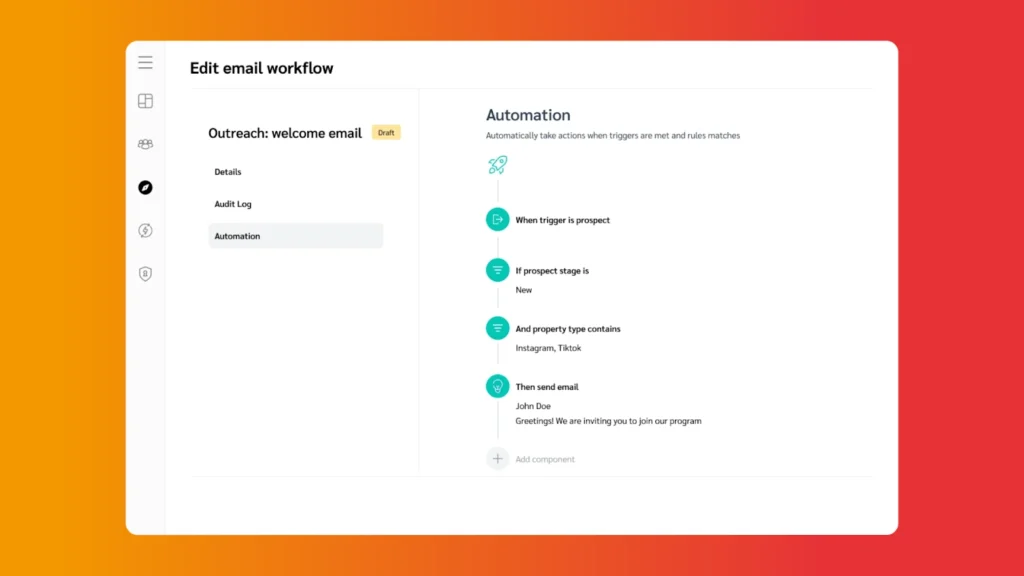
Tools such as email workflow automate your partner management workflows
Create an affiliate resource portal: Maintain an up-to-date repository where affiliates can access essential documents, promotional assets, and recent updates on demand. This mitigates the risk of missed updates.
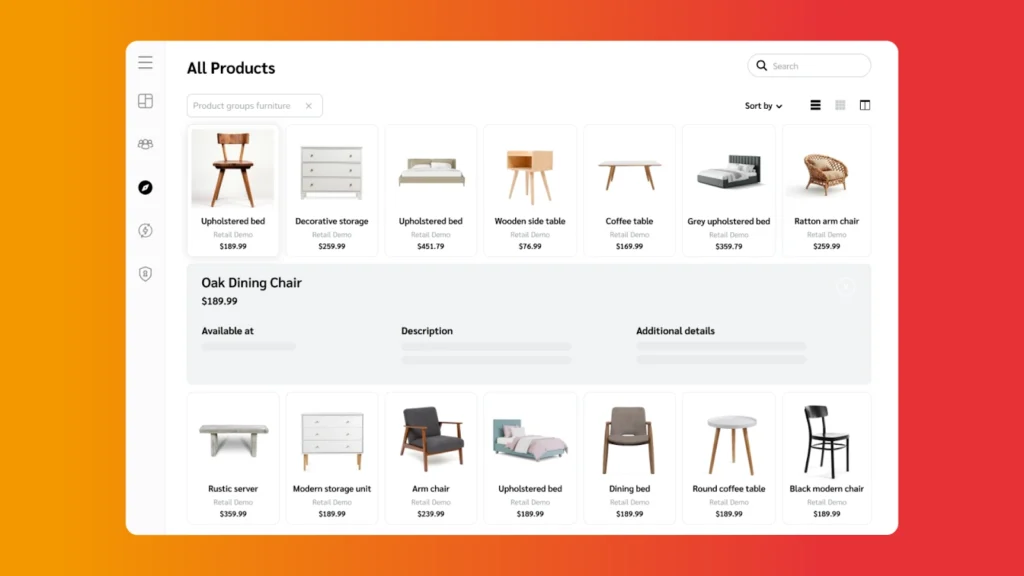
Curated Product Catalogs save your partners time and guide their activity by telling them which products to promote.
4. Build effective two-way feedback systems
Great partnerships rely on two-way communication. But when affiliates don’t have a chance to share their insights, they can feel undervalued. Without a structured system to collect and act on feedback, affiliates may feel disconnected, resulting in missed opportunities to optimize strategies or address challenges early. This lack of collaboration can weaken the partnership and impact affiliates’ performance.
Why it happens: When decision-making is too centralized, affiliates might struggle to voice their ideas or concerns. It can also arise when brands don’t invest in robust communication infrastructure or fail to prioritize feedback mechanisms.
Why fixing it matters: Affiliates interact directly with your target audience, offering unique consumer insights that can shape more effective campaigns. Without accessible feedback mechanisms, brands risk missing valuable knowledge and opportunities to refine strategies or effectively address audience needs.
Strategies to strengthen feedback loops
Launch strategic feedback campaigns: Regular feedback collection directly correlates with affiliate program success – brands that systematically gather partner insights see higher affiliate retention rates. Structure your feedback program around these key components:
- Quarterly satisfaction surveys
- Campaign experience and resource accessibility
- Communication frequency and quality
- Payment and tracking accuracy
- Tool usability and feature requests
- Program support responsiveness
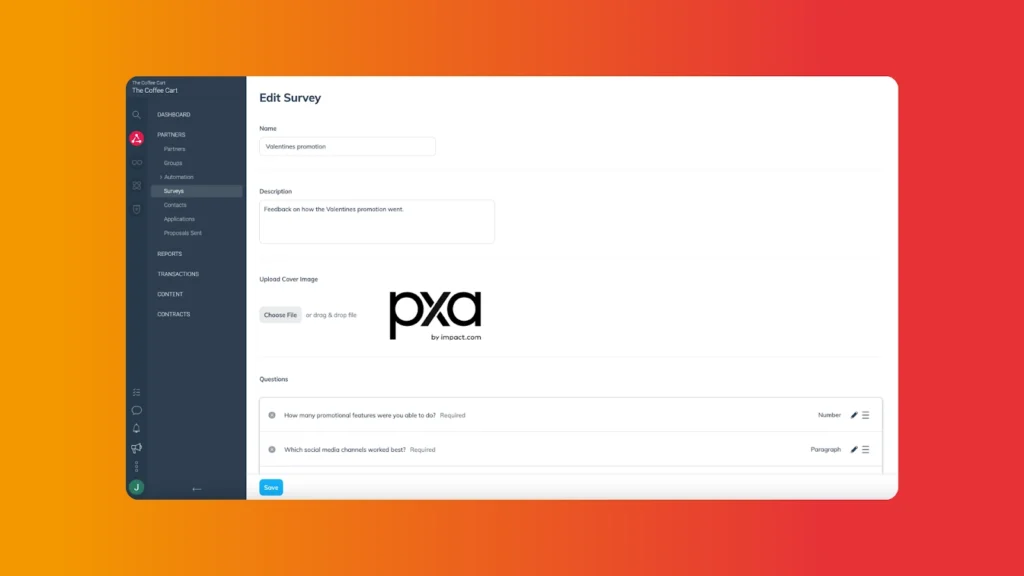
Surveys by impact.com allow you to survey partners who already joined your program or upon sign-up.
Hold quarterly or monthly review meetings: Establish a recurring schedule for reviews to ensure feedback is exchanged regularly. Use these sessions to discuss campaign performance, address concerns, and align future goals.
Use performance debriefs after major campaigns: Schedule a debrief to evaluate results and gather affiliate insights after each campaign. This helps refine strategies and keeps feedback continuous.
FAQ
Streamlined communication ensures clear updates, aligns goals and reduces the risk of missed opportunities. By keeping affiliates informed and engaged, brands can build stronger, more productive partnerships that drive better results.
Brands can set up a structured schedule for updates using calendar reminders and automate communications through newsletters and email workflows. This keeps affiliates consistently informed and engaged without extra manual effort.
Brands can use surveys, suggestion boxes, and one-on-one check-ins to gather feedback. Providing performance reports also allows affiliates to share insights based on their results, fostering a collaborative feedback loop.
Drive better results through strategic affiliate communication
Effective affiliate partnerships thrive on clear, consistent, and collaborative communication. You can transform these challenges into opportunities by addressing common pitfalls such as scattered tools, misaligned expectations, and inconsistent updates.
Successful affiliate programs rely on streamlined communication systems to drive results. By centralizing your program management through platforms like impact.com, you can automate key workflows, improve partner engagement, and build stronger, more productive relationships.
Contact grow@impact.com or schedule an impact.com demo to help you centralize, automate, and elevate your interactions with affiliates.
Want to know more about affiliate marketing? Check out these other impact.com resources:


